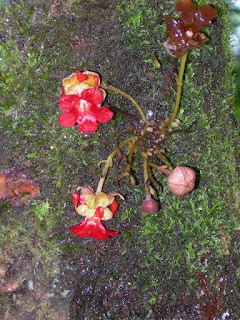Resolved: Pruning will not result in the poodling of any shrubs.
Any shrubbery that must be poodle pruned over and over again is simply the wrong plant in the wrong place. With the exception of clever topiary, such shrub butchery should be outlawed.
Resolved: The known hardiness of any new plants will be researched before buying them so as not to be taken advantage of by unscrupulous nurserypersons who think you can increase plant hardiness by labeling.
The frequency with which plants are over-optimistically labeled as cold hardy is increasing. Let the buyer beware of such scams. Further watch out for herbaceous perennials that come from alpine areas. Here in the great American Midwest they’ll survive our winters only to die in the heat of our summers.
Resolved: No singletons will be planted unless the plant is intended to be a large specimen. Basically all plants look better when planted in clusters. Mrs. Phactor has trouble with this resolution, annually.
Resolved: The scientific names of my favorite garden plants will be learned.
Scientific names are not so hard (as the Phactor regularly points out in his Know your genera series), just unfamiliar, and there is no reason for gardeners to remain botanically illiterate.
Resolved: More native plants will be incorporated into my garden.
The Phactor likes exotics as much as the next person (especially if its name starts with Magnolia), but no matter where you live, there are attractive and interesting native plants. Try walking into your local nursery and saying, “What do you have that is native?” If just one person does it, they’ll think you’re crazy, and send you away just to get you out of there. If two people do it, then they’ll figure you’re both weird, and they won’t want to do business with either one of you. If three people walk in and ask for native plants, well, that’ll confuse them and they’ll wonder what is going on. But what if a hundred people walk in and ask for native plants, why they’ll think it’s a movement they'll have to get behind. And that’s what it is, the natives are restless movement.
Resolved: A weedless lawn lawn is not to be admired or strived for.
The Phactor has explained the ecology of lawns; go here for a refresher.
Resolved: Travel will be planned to visit XXX (fill in your number) of botanical gardens or arboreta this year.
The Phactor has no idea how many botanical gardens he’s visited. It’s a lot. Perhaps you need a copy of 1001 gardens you must see before you die. Even the Phactor has only ticked off 3 to 4 dozen of these. To improve progress toward an impossible, but laud worthy goal, The Phactor and his colleague the Dean of Green, along with our lovely wives, began organizing botanical geek tours with the expressed purpose of traveling to see as many gardens as possible. Sorry we do not take reservations.
Resolved: People who dig up a garden and plant grass or pave it in cement will not automatically be dismissed as morons.
Unless of course it’s a garden you yourself planted, then they are garden morons who should have stayed in their property-less, brick-bounded, plant-barren apartment. If the Phactor ever sells his current garden, an unlikely scenario, an extensive questionnaire and application process will be required for aspiring purchasers. The correct attitudes can be found by whole heartedly adopting the resolutions above.
Best for 2010.
Change of address
5 months ago in Variety of Life






































